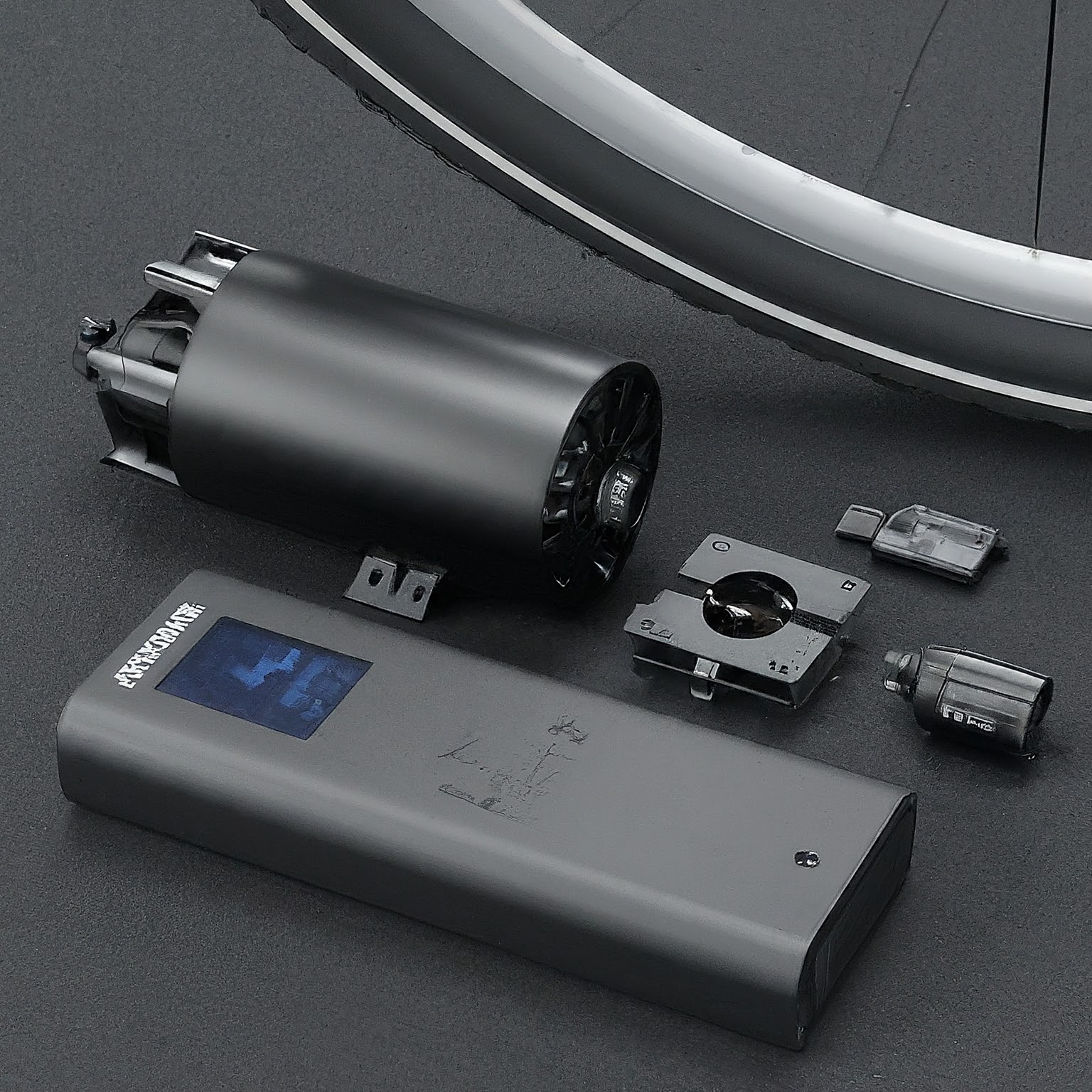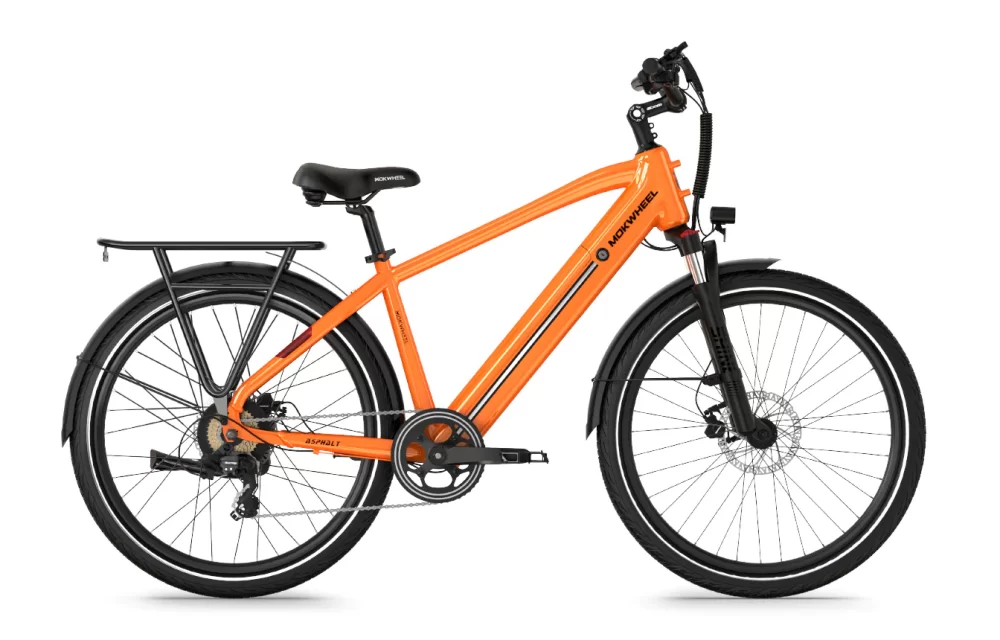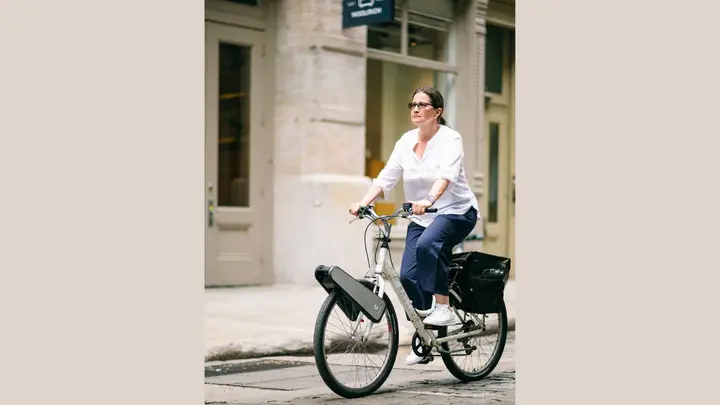Long Range Ebike Conversion Kits vs. Power Banks: Which to Choose?
Last Updated on June 12, 2024 by Kristina Grant
Electric bikes, or ebikes, have exploded in popularity in recent years. They offer a fun, eco-friendly way to get around, tackling commutes, exploring trails, and enjoying the outdoors with a little extra boost. But for many riders, the biggest hurdle is range anxiety – the fear of running out of battery power before reaching their destination.
The good news is, there are ways to extend your ebike’s range and conquer longer distances. This article will explore two popular approaches: long-range ebike battery conversion kits and portable power banks. We’ll delve into the pros and cons of each option, helping you decide which strategy best suits your needs and riding style.
Whether you’re a seasoned ebike enthusiast or a curious newcomer, this guide will equip you with the knowledge to make informed choices and unlock the full potential of your electric adventure.
Key Takeaways
- Conversion kits offer significantly longer range extension but require technical knowledge and have a higher cost.
- Power banks are easier to use, more portable, and more affordable, but offer limited range extension.
- Consider your technical expertise, budget, and desired range increase when choosing between a conversion kit and a power bank.
- Ebike weight, battery voltage, and motor compatibility are important factors to consider for both conversion kits and power banks.
- Ensure the chosen solution complies with ebike regulations in your area (if applicable).
- Online ebike forums and communities are valuable resources for finding information and support.
- Always prioritize safety when working on your ebike. Consult a professional if needed.
Long Range Ebike Battery Conversion Kit: Unleashing Your Ebike’s Full Potential
For riders who crave extended range and the freedom to explore further on a single charge, a long-range ebike battery conversion kit offers a powerful solution. But what exactly is a conversion kit, and how does it work?
In essence, a conversion kit replaces your ebike’s existing battery with a higher capacity one. This translates to significantly more watt-hours (Wh) – the unit of energy storage capacity. Imagine a larger gas tank for your ebike; a higher Wh rating translates to more miles you can conquer on a single charge.
The Conversion Process:
Installing a conversion kit typically involves replacing the battery itself, and sometimes the motor controller or other electrical components. While some kits are designed for easy installation, others require a more technical understanding of ebikes and their electrical systems. It’s important to choose a kit compatible with your specific ebike model and motor, and to carefully follow the manufacturer’s instructions. If you’re not comfortable with DIY projects, consider seeking help from a qualified ebike mechanic.
Benefits of Gearing Up for Long Rides:
The most compelling advantage of a conversion kit is the dramatic increase in range. By swapping in a higher capacity battery, you can potentially double or even triple the distance you can travel on a single charge. This opens up a world of possibilities, allowing you to tackle longer commutes, explore farther on adventure rides, or simply enjoy extended leisure cruises without worrying about running out of juice.
Beyond extended range, some conversion kits offer additional benefits:
- Improved Performance (Optional): Certain kits might include a more powerful motor or controller, boosting your ebike’s top speed or acceleration. This can be particularly appealing for riders who tackle hilly terrain or desire a more exhilarating ride.
- Greater Flexibility and Customization (Optional): Some conversion kits offer a wider range of battery capacities to choose from, allowing you to tailor the upgrade to your specific needs. Additionally, some advanced kits might come with features like programmable controllers or real-time battery data displays, enabling further customization of your ebike’s performance.
However, it’s important to remember that conversion kits aren’t without their drawbacks, which we’ll explore in the next section.
RELATED CONTENT – DIY Electric Bike Conversions: Beginners Guide
Conversion Kit Drawbacks: Weighing the Options
While conversion kits offer a compelling path to extended range and potential performance gains, there are a few key drawbacks to consider before diving in:
- Technical Expertise: Installing a conversion kit can range from user-friendly to requiring significant technical knowledge. Some kits are designed for easy swapping, while others involve modifying your ebike’s electrical system. If you’re not comfortable working with electrical components or your ebike’s internal workings, consider seeking help from a qualified ebike mechanic. Improper installation can damage your ebike or pose safety risks.
- Higher Upfront Cost: Compared to power banks, conversion kits typically carry a higher upfront price tag. This cost reflects the higher capacity battery and potentially additional components like a motor controller. Carefully research and compare kit options to find one that fits your budget and technical comfort level.
- Warranty Woes: Installing a conversion kit may void your ebike’s original warranty. This is because modifying the electrical system can be seen as a risk factor by manufacturers. Before embarking on a conversion project, check your ebike’s warranty terms and weigh the potential benefits against the risk of voiding coverage.
- Weight Considerations (Optional): Larger capacity batteries inherently weigh more. While some riders might not find this a significant drawback, others may prioritize a lighter ebike for maneuverability or climbing efficiency. Conversion kit weight can vary depending on the chosen battery capacity. If weight is a major concern, consider researching lightweight battery options within compatible conversion kits.
RELATED CONTENT – Navigating Power Bank Regulations for Ebikes
Power Bank: A Convenient Top-Up for Your Ebike Adventure
For riders who crave a simpler solution for extending their ebike’s range, a portable power bank offers a convenient and user-friendly option. Let’s explore how a power bank functions as a range extender for your ebike.
Extending Your Ride with Portable Power:
Imagine a portable power bank for your ebike just like you might use one for your smartphone. In essence, that’s exactly how it works. A power bank is a self-contained battery pack that can be used to charge various electronic devices. By connecting a compatible power bank to your ebike, you can essentially top-up the battery and squeeze in some extra miles during your ride.
The Power of Convenience:
The beauty of power banks lies in their simplicity. They are typically lightweight and compact, easily fitting in a backpack or mounted on your ebike’s frame. Using a power bank requires no technical knowledge or modifications to your ebike. You’ll typically find a designated charging port on your ebike’s frame or battery compartment. By connecting the power bank to this port using the appropriate cable (often sold separately), you can provide additional juice to your ebike’s battery while on the go.
Benefits of a Portable Power Bank:
There are several advantages to using a power bank for extending your ebike’s range:
- Easy to Use and Portable: As mentioned earlier, power banks are incredibly user-friendly and their compact size makes them easy to carry or mount on your ebike. No need for complex installations or modifications.
- No Technical Knowledge Required: Unlike conversion kits, using a power bank requires no technical expertise. Simply connect the power bank to your ebike’s charging port and you’re good to go.
- Lower Upfront Cost: Compared to conversion kits, power banks represent a more affordable solution for extending range. This makes them a good option for budget-conscious riders or those who only require a modest range boost.
- No Impact on Ebike Warranty: Using a power bank typically won’t void your ebike’s warranty, as it doesn’t involve modifying the ebike’s internal components. This is a major advantage for riders who want to maintain their warranty coverage.
RELATED CONTENT – Solar Power on the Go: DIY Charging Solutions
Power Bank Drawbacks: Considering the Limitations
While power banks offer a convenient and user-friendly solution for extending range, they do come with some limitations:
- Limited Range Boost: Compared to conversion kits, the additional range you gain from a power bank is typically much smaller. Power bank capacities are measured in milliamp hours (mAh), while ebike batteries are measured in watt-hours (Wh). Since Wh is a unit of energy, it provides a more accurate picture of usable power. This means a power bank, despite its potentially high mAh rating, won’t offer the same dramatic increase in range as a higher capacity conversion kit battery.
- Frequent Charging Needs: Due to their lower capacity, power banks will likely require frequent recharging themselves. This can be a hassle, especially on longer rides. You’ll need to factor in charging time for the power bank on top of your ebike’s charging time.
- Compatibility Considerations: Not all power banks are created equal when it comes to ebikes. Ensure the power bank’s voltage output matches your ebike’s battery voltage (typically 12v, 36v, or 48v). Additionally, you might need a separate DC-DC converter to regulate the power bank’s output for safe and efficient charging of your ebike battery. Always double-check compatibility and consult your ebike’s manual or manufacturer before purchasing a power bank.
- Weight on Your Wheels: While generally lighter than conversion kits, power banks still add weight to your ebike. This can be a minor concern for casual riders on flat terrain, but for those tackling hills or prioritizing a lightweight ebike, the additional weight of a power bank might be noticeable.
RELATED CONTENT – Tips for Converting Your Traditional Mountain Bike into Electric Mountain Bike
Conversion Kit vs. Power Bank: Choosing Your Ebike Range Extender
Now that we’ve explored the pros and cons of both conversion kits and power banks, it’s time to delve into a direct comparison to help you decide which option best suits your needs. Here’s a table summarizing the key factors:
| Feature | Conversion Kit | Power Bank |
|---|---|---|
| Range Extension | Significant increase (can double or triple range) | Modest increase |
| Ease of Use | Requires technical knowledge or professional installation (may vary by kit) | Easy to use, no modifications needed |
| Cost | Higher upfront cost | Lower upfront cost |
| Technical Expertise | May require knowledge of ebikes and electrical systems | No technical knowledge required |
| Ebike Warranty | May void warranty | No impact on warranty |
| Portability | Varies depending on battery size, generally less portable than power bank | Highly portable |
| Weight | Adds weight due to larger battery | Adds some weight |
Choosing the Right Option:
The best choice for you depends on your individual needs and preferences. Here’s a breakdown to help you decide:
- For Significant Range Increase: If extending your range by a substantial amount is your top priority, a conversion kit is the way to go. Be prepared for a potentially higher upfront cost and the possibility of needing professional installation or possessing some technical knowledge.
- Budget-Conscious Choice: If affordability is a major concern, a power bank offers a more cost-effective solution for extending range. However, keep in mind the limitations on range extension and the need for frequent recharging.
- Technical Expertise: If you’re comfortable working with electrical components or can enlist professional help, a conversion kit can unlock significant range gains. If you prefer a simpler solution, a power bank is a user-friendly option requiring no modifications to your ebike.
- Ebike Warranty Concerns: If maintaining your ebike’s warranty is crucial, a power bank is the safer bet, as it doesn’t involve modifying your ebike’s internal components.
- Portability Matters: For riders who prioritize a lightweight and easily transportable ebike, a power bank is the clear winner due to its compact size. However, if portability isn’t a major concern, the increased range offered by a conversion kit might outweigh the added weight.
Ultimately, the best way to choose is to carefully consider your riding habits, budget, and technical comfort level. Don’t hesitate to research specific conversion kits and power banks to find options that match your ebike model and desired range extension.
FAQs
A: Absolutely! Ensure the power bank’s voltage output matches your ebike’s battery voltage. Using an incompatible voltage can damage your ebike’s electrical system. Additionally, some power banks might require a DC-DC converter to regulate the output for safe and efficient charging. Always consult your ebike’s manual or manufacturer before using a power bank and prioritize using reputable brands with built-in safety features.
A: There are two main factors to consider:
Ebike battery capacity (Wh): This information can typically be found on your ebike’s battery or in the user manual.
Desired range extension: Aim for a power bank with a capacity that’s at least 20-30% of your ebike’s battery Wh rating. For example, if your ebike battery has a 250Wh capacity, a power bank with a minimum capacity of 50-75Wh would be a good starting point. Remember, higher capacity power banks will provide a greater range extension but will also be heavier and more expensive.
A: While conversion kits and power banks are the most common methods, here are a couple of alternative strategies:
Upgrading your riding style: Techniques like maintaining a steady pace, using pedal assist efficiently, and minimizing braking can all contribute to extending your ebike’s range on a single charge.
Investing in a more efficient ebike: If you’re in the market for a new ebike, consider models known for their long range and energy efficiency. Look for ebikes with high-quality motors and larger capacity batteries.
Conclusion:
The insatiable thirst for extended range is a common concern among ebike riders. This blog post has explored two popular solutions: long-range ebike battery conversion kits and portable power banks.
Conversion kits offer a powerful path to significantly increase your ebike’s range, potentially doubling or tripling the distance you can travel on a single charge. However, they require technical knowledge or professional installation and come with a higher upfront cost.
Power banks, on the other hand, provide a user-friendly and affordable option for extending range. They’re easy to use, require no modifications to your ebike, and won’t void your warranty. However, the range extension they offer is typically more modest, and they require frequent recharging.
Ultimately, the choice between a conversion kit and a power bank boils down to your individual needs and preferences. Consider your budget, technical expertise, desired range extension, and how much weight you’re comfortable adding to your ebike.
The Road Ahead: Research and Ride!
The world of ebikes offers a wealth of options for extending your range and customizing your ride. Don’t hesitate to research specific conversion kits and power banks to find models compatible with your ebike and suited to your riding style. Explore online ebike communities and forums to learn from other riders’ experiences.
We encourage you to leave a comment below with any questions you might have about extending your ebike’s range. Happy riding, and may your electric adventures be long and fulfilling!
External Sources:
Online ebike retailers selling conversion kits and power banks:
- Luna Cycle (https://lunacycle.com/mid-drive-kits/) sells a variety of conversion kits for different ebike models.
- Endless Sphere (https://endless-sphere.com/sphere/) is a large online forum community for ebikes. While not a retailer itself, users frequently discuss and recommend conversion kits and other ebike parts.
Ebike safety information:
- The National Highway Traffic Safety Administration (NHTSA) (https://www.nhtsa.gov/interpretations/08-002289as) offers safety information specifically for ebikes, including tips on battery safety and maintenance.
- Helmets.org (https://helmets.org/) is a non-profit organization that advocates for helmet use on bicycles and ebikes. They offer information on proper helmet fit and safety standards.
Kristina Grant is not just an enthusiast but a true authority on electric bikes. Nestled in the coastal beauty of Virginia, Kristina has found the perfect backdrop for her passion for electric biking. As a dedicated wife and homeschooling mom, her life revolves around family, faith, and the thrill of adventure.
Originally hailing from Ohio, Kristina's journey with electric bikes began as a curiosity and quickly evolved into a deep expertise. Her blog is a testament to her love for electric biking, combining her fascination for eco-friendly transportation with her coastal lifestyle.
When she's not cruising the beach on her electric bike, you'll find Kristina indulging in her other loves: long walks along the shore, getting lost in a good book, and cherishing moments with her loved ones. With a heart as big as her love for animals, especially cats, Kristina brings a unique perspective to the electric bike world, grounded in her strong faith in God and her dedication to a sustainable lifestyle.
Through her blog, Kristina shares her extensive knowledge of electric bikes, offering valuable insights, tips, and recommendations to fellow enthusiasts. Whether you're a seasoned rider or a newcomer to the electric bike scene, Kristina's blog is your go-to source for all things electric biking, fueled by her passion, expertise, and the scenic beauty of coastal Virginia.












